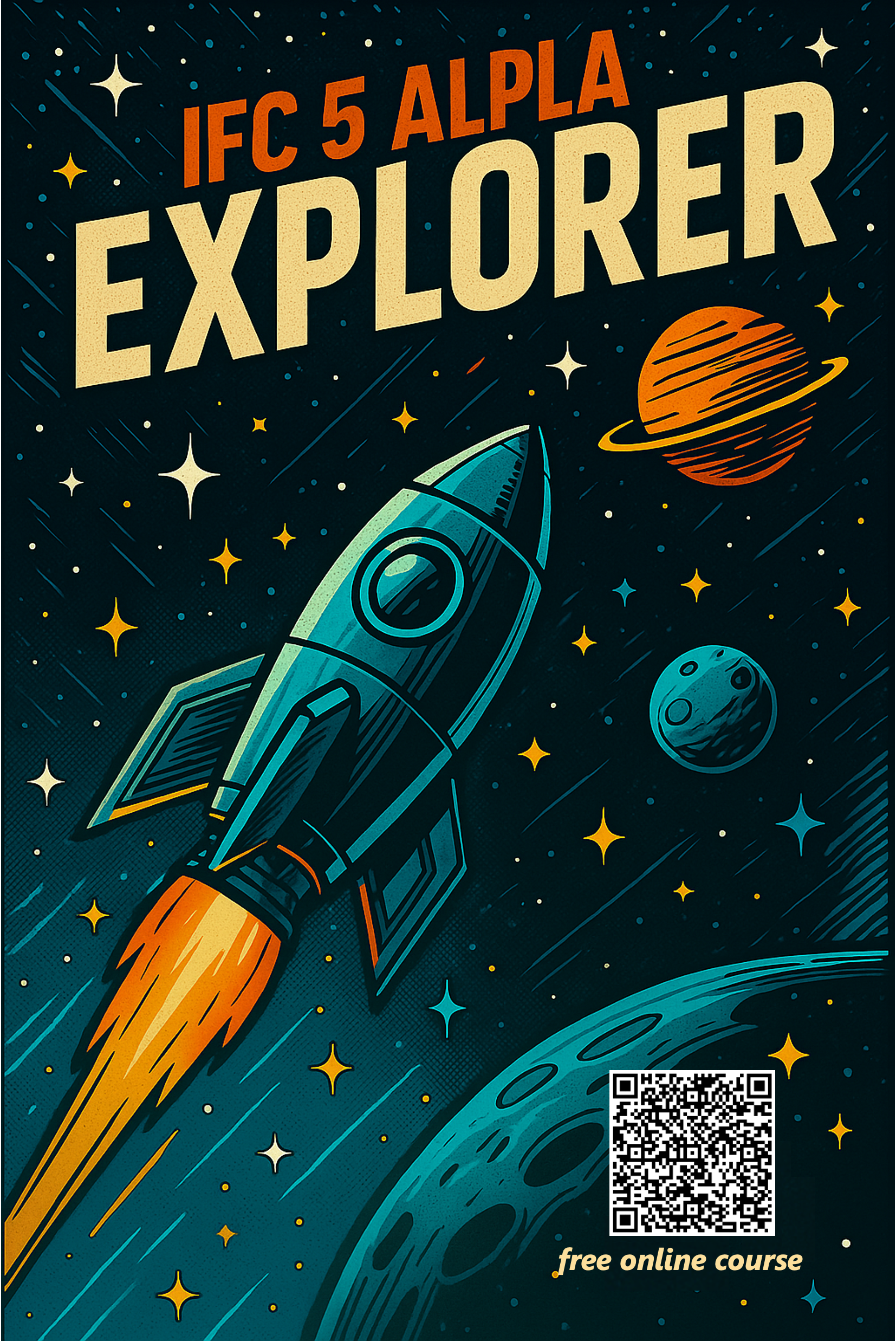Invisible Wall
Humans are naturally risk-averse. We tend to observe, imitate, and follow rather than take the initiative to try something new. Especially when everyone around us seems to be turning back at a road, we instinctively assume, “There must be a problem ahead.”
Over time, we start to build an “invisible wall” in our minds around the paths we’ve never taken. We even begin telling others, “That way doesn’t work.”
We construct one mental barrier after another and gradually accept them as fixed boundaries. But real boundaries are not walls. They’re simply the step we choose not to take. The essence of exploration is the courage to keep moving forward even when you're facing uncertainty. Not every “turning back” means “there’s no way ahead.” Sometimes, it’s just where others decided to stop, it doesn’t have to be where you stop too.
But does the wall actually exist?
You may have heard things like:
- IFC is just an intermediate export format.
- IFC is like a PDF, it’s static and can’t be edited.
- IFC has all sorts of problems, and no one actually uses it.
But if you’ve really looked into it yourself, you might discovered:
- IFC is not just a file format. At its core, it’s an international open data standard.
- IFC is not a static format. In fact, there are even modeling tools built entirely around IFC.
- IFC certainly has its own limitations, but it’s used every day by people around the world.
We often give up exploring without even verifying, simply because “others says so.” But real exploration is about starting acknowledge the complexity, embracing uncertainty, and being willing to check things yourself rather than just copying what others say. Real understanding doesn’t come from hearsay. It comes from walking the path yourself, trying, failing, and learning through direct experience.
Try it before you deny it.
Maybe the wall doesn’t exist at all. Maybe it’s just the shadow left behind by those who stopped walking. And the only person who can truly see that wall for what it is — is the one willing to approach it and touch it with their own hands.
Rational Cage
The unknown can hold us back, but what we already know can trap us too.
When you finally build up the courage to step toward that unknown, you may find the bigger obstacle isn’t what others warned you about, but what you’ve already convinced yourself to be true. Your well-reasoned analysis and experience-shaped ideas can quietly become a rational cage.
Knowledge empowers, but it can also bias.
We’re used to explaining the new through what we already understand, and judging new ideas through the lens of past experiences. But often, the more we know, the easier it becomes to fall into the trap of thinking we already understand everything. We’re quick to apply old models to new situations — to compare, classify, and analyze — instead of pausing to look again with fresh eyes. If we always view the world from the center of what we already know, we may never reach the possibilities that lie beyond it.
Knowledge is not the destination — it’s the starting point.
Experience isn’t the final answer — it’s how we begin asking better questions.
A real explorer doesn’t just walk where others don’t, they also challenge what they themselves believe to be true. So maybe it’s time to put down the map you’ve been holding, and ask a few questions together:
- IFC uses EXPRESS as its syntax, which is hard to parse. Can we find a better way to handle IFC data, something as easy to work with like JSON?
- Every data exchange is a big file. Could we instead support incremental model updates, where teams collaborate by sharing only deltas and changes?
- File-based exchange doesn’t suit modern cloud-native systems that need high-frequency, real-time data exchange. Could an API-based approach help IFC better connect with today’s technologies?
- What about procedural geometry, point clouds, GIS data? Could these all live together in an IFC-based environment?
- What should the next generation of IFC look like? How can it serve as a foundation for future data exchange?
To answer these questions, all we need to do is take a step forward. To look, to ask, and to search for better answers, together.
Because the door is always open.
The Open Door
IFC has never been perfect. It can’t solve every problem or challenge. We could keep pointing out its flaws, but what makes IFC unique is that it is an open data standard. It’s shaped by a global industry community, shared transparently, and open to contribution.
IFC has already come a long way.
For nearly 30 years, we’ve continued to explore its boundaries and industries needs — from only buildings to infrastructure, roads and bridges, railways, ports and waterways.
And as technologies evolve, we keep asking how IFC can support more functions and workflows. We keep learning too. IFC 5 is inspired by many things — ECS, USD, JSON, and of course, mostly the past three decades of practical knowledge built through IFC itself.
Most importantly, it has always remained open. Open to questions, open to feedback, and open to contributions. It’s something we build together, as an industry.
Now that the IFC 5 arrived alpha stage, what can we do?
Explore it. Learn what’s changing. Share your feedback. Help build what’s next.
Because whether it’s IFC, or us
Explore. Learn. Stay Open. That’s the only way forward.

Join us on IFC 5 Alpha free online course
It's free and open to all.
Annex
This article isn’t here to promote IFC. Or any particular version.
It’s not our job to push IFC. Nor a specific version. It’s our job to make sure it sells itself. Through quality. Through simplicity. Through reliability. Through the fact that it provides massive value because it is an open publication.
— Léon van Berlo, Technical Director, buildingSMART International
